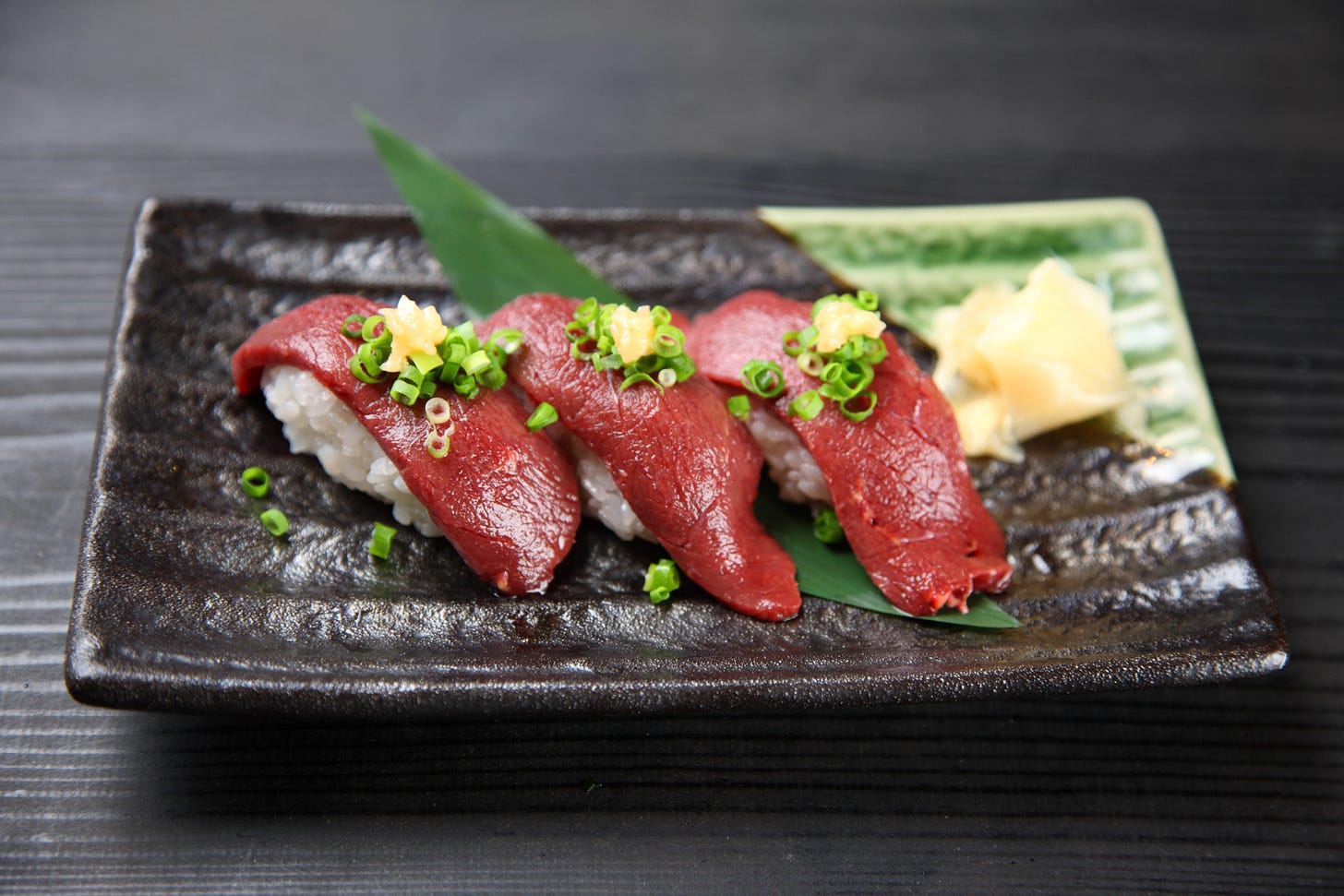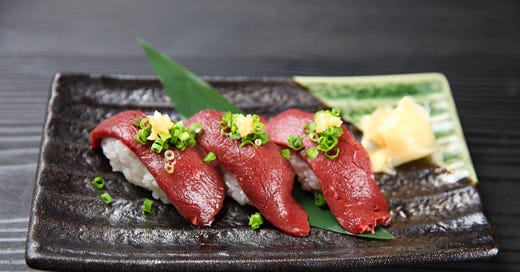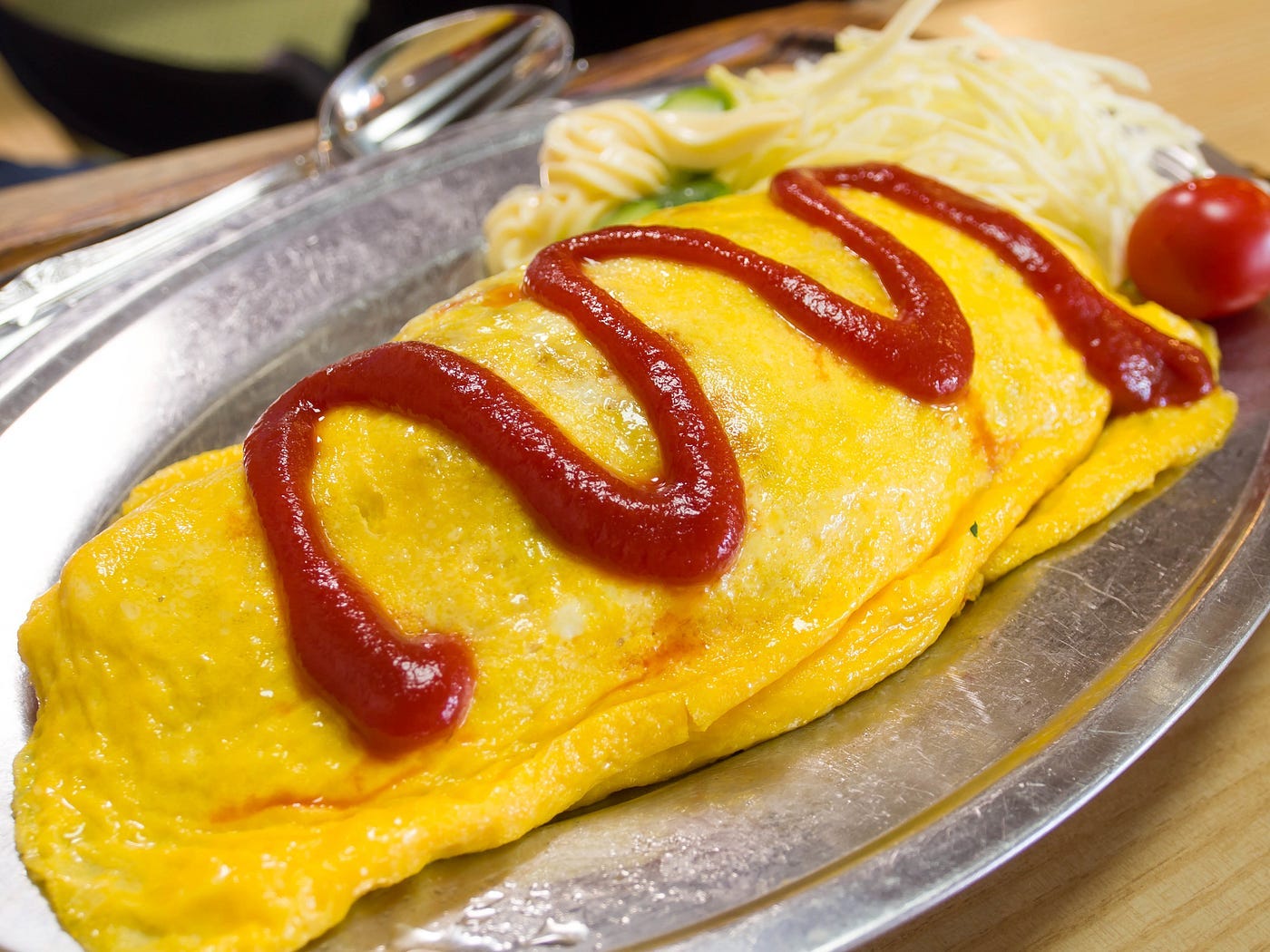I arrived in Japan with the worst hacking cough of my life, exacerbated by staying at an inn where smoking indoors—by then, banned for over a decade in Australia—was permitted. I distinctly remember hanging back at the entrance to a bakery a friend and I visited in Osaka, fearful of contaminating the loaves and buns left exposed to the air. I was surprised they weren’t behind glass cases. After all, it was the height of the Swine Flu epidemic.
It was September, and the heat and high humidity had quashed my appetite entirely. Instead, I subsisted on slices of watermelon and miniature cans of iced coffee from Japan’s plentiful vending machines, most of them emblazoned with images of a stern Tommy Lee Jones, the face of Boss Coffee.
Another vending machine obsession of mine was C.C. Lemon, which I firmly believed to have curative powers. The label proclaimed that it had “70 lemons’ worth of Vitamin C in every bottle”, making it medicine as far as I was concerned.
Shortly after my appetite returned, I discovered the joys of convenience store bento and onigiri. Delicious and inexpensive. My favourite filling for onigiri (rice balls) was a combination of tuna, wasabi and Kewpie mayonnaise, though I was also partial to grilled salmon or umeboshi (pickled plum).
Typically, boxed lunches were sukiyaki (beef) or teriyaki (chicken) with rice, cubes of konjac, pickled daikon radish, and a side of fried shrimp or chicken. The convenience store clerks would kindly offer to warm up your bento in the microwave so it could be consumed piping hot.
After semester started, I’d skip breakfast and cycle the half hour to university, making it in the nick of time. As the days grew colder, I’d order a watery, lukewarm strawberry hot chocolate from a vending machine outside the building to tide me over during class. I’m still waiting for warm-beverage vending machines in Australia.
During break times my friends and I would head to the mini supermarket located on campus for onigiri or, on rare occasions as I was not a habitual coffee drinker at the time, to a café where I learnt that although Japanese is not a tonal language you are required to say ‘kokoAH’ with a rising intonation when ordering hot chocolate (cocoa).
After morning classes wrapped up, a friend and I would walk the grounds of the Old Imperial Palace, treading its gown of fallen leaves and sharing a bar of plum liquor chocolate while keeping an eye out for stray cats to coo over.
Lunch was often taken at the cafeteria on campus. I relished—pun intended—the little dishes of kimchi that were always on offer. All meals and side dishes came on heavy plates and were priced according to weight. The total nutritional content of your meal would be printed on your receipt, something I still wish restaurants here in Melbourne would emulate.
Sometimes my friends and I would go to a Thai restaurant near campus for lunch instead. I still remember its set menus of red, green and yellow curries, the ornate silver plates, the carafes of chilled juices, and best of all, the tank of Siamese fighting fish.
My student apartment was located on 6th Street opposite a behemoth of a dark wood temple and so I regularly awoke to chanting. I spent most of my leisure time on Sanjou (3rd Street), adjacent to the more upmarket 4th Street shopping district. The mall on 3rd Street was home to the Lipton Café where a friend and I once had pilaf of all things, followed by lemon parfaits and Mont Blancs, chased with Lipton-brand—naturally—hot tea.
Outside the mall was an amazing sushi train restaurant where you could watch the sushi chefs at work and even put in a request. Mine was typically a call from more salmon or ikura (fish roe), until by the end of the night there be a pile of six to seven plates beside me. I never collected any dish off the conveyor belt that I wasn’t completely certain of, for I lived in fear of horse meat sashimi.
I didn’t want another lost-in-translation moment, like the time I ordered “steak”…
While I was spoilt for choice in terms of fresh fish, a diet with greatly reduced meat consumption took some getting used to. Which is why when I saw ‘hamburger steak’ on the menu at a café I was inordinately excited. It was only 1080 yen (slightly over $10), a bargain to boot. It turns out hamburger steak is less steak and more—entirely—hamburger patty/meatloaf. I’ll never understand its popularity.
Nor the appeal of omurice, rice wrapped in an egg omelet and covered in ketchup (sometimes also mixed into the rice). Perhaps it’s meant to be a comfort food the likes of cocktail sausage wieners or mac and cheese—designed to appeal to a child’s palate?
Late nights completing homework at Starbucks (green tea lattes) or Mr. Donut (free coffee refills) were common. As was dinner at a ‘French’ restaurant we’d frequent for Western fare, and an all-you-can-eat (tabehoudai, the second sweetest phrase in Japanese after nomihoudai, ‘all you can drink’) pizzeria. Japanese pizza is often topped with corn, though we encountered no such travesty at this particular establishment.
If we felt like fast food, there was McDonald’s, KFC (especially popular on Christmas Day), or Mos Burger with its rice-bun burgers and Melon soda. Melon soda is the nectar of the gods. I don’t know what they put in it—apart from fructose corn syrup, of course—but it’s super refreshing (or “refleshing” as per my favourite vending machine typo). I image it’s what Slurm, the highly addictive drink from Futurama, tastes like.
Melon soda was our drink of choice at karaoke, where it was mixed in industrial quantities inside a soda dispensing machine, which I think is key. While it’s possible to buy Melon soda even in Australia, it just doesn’t taste the same coming from the bottle.
On one memorable night my friends and I visited an ice-cream café and ordered a giant novelty parfait, the kind for ten people. I took my share and didn’t dip my spoon back into the melting mess, which turned out to have been most prudent as the next morning one of the group started to show symptoms of Swine Flu and ended up missing class for a week.
The price of fruit at my local supermarket astounded me; apparently Japan suffers from obscenely high fruit tariffs. Milk came in tiny cartons as the Japanese aren’t big into dairy, and loaves of bread were similarly composed of only a few slices, but never four (shi) as it shares its pronunciation with the word for death. All handy for someone living on their own.
Some of my favourite meals in Japan have included papaya salad (Okinawan cuisine), sashimi fresh from the docks in Sapporo, traditional yatsuhashi (triangles of rice flour confectionery with assorted fillings) from Kyoto, okonomiyaki (cabbage pancakes) in Hiroshima, miso dango from Nara where the deer roam freely, and ramen from a Mom ‘n Pop joint in Otaru where I was the only customer.
When I returned to Kyoto after a number of years for a holiday, I chose a hotel on 3rd Street and immediately headed for my favourite sushi restaurant. I was gratified to see that the dishes were now covered in plastic containers. I had assumed for OH&S reasons, however, it transpired that this was just a temporary measure for dealing with the humidity that night.
New, too, was the welcome addition of English labels on dishes.
I recalled a conversation a friend and I had back home about my fear of accidentally ingesting horse (a common fear, I’m sure):
‘It had the character for horse on it!’
‘Are you sure, maybe it was just horse mackerel?’
Under the dim mood lighting, a platter made it’s way past me, beneath the Japanese the English translation read ‘Horse mackerel’. Ah, so I was safe all along. Just then, another dish sailed past me, it plainly stated ‘Horse’.
Maybe someday I’ll summon the courage to try it.

Knowledge is Power, France is Bacon is a reader-supported publication. If you would like to support KIPFIB, please consider a subscription or buying me a coffee.




